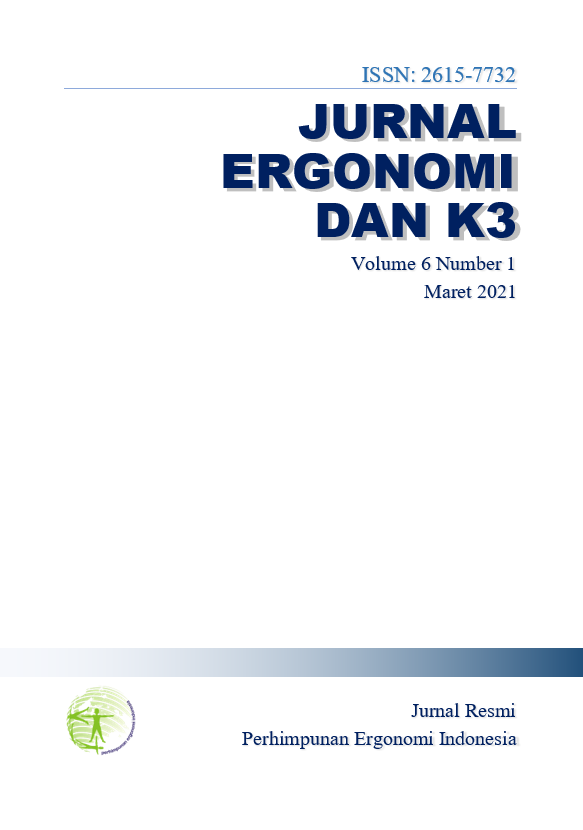Pengaruh Gender dan Usia Pada Memori terhadap Iklan Banner
Abstract
Bidang kajian ergonomi kognitif, khususnya terkait dengan interaksi-manusia komputer, menjadi semakin penting dan relevan dewasa ini. Dengan berkembangnya pertukaran informasi dan perdagangan elektronik melalui internet, semakin banyak informasi terkait produk dan jasa yang disampaikan melalui iklan banner di berbagai website. Salah satu ukuran performansi dari iklan banner adalah konsumen dapat mengingat informasi, khususnya merek, yang diiklankan. Untuk itu perlu diketahui bagaimana perbedaan karakteristik konsumen memengaruhi memori akan banner tersebut. Dalam penelitian ini karakteristik konsumen yang diteliti difokuskan pada gender dan usia. Untuk menjawab efek dari gender dan usia terhadap kemampuan melakukan recall dan recognition terhadap banner dan merek di dalam banner tersebut, digunakan data hasil survei di tujuh negara yang melibatkan 21 kampanye iklan banner dan 8736 responden. Hasil pengolahan data menggunakan multilevel structural equation model menunjukkan bahwa pria memiliki kemampuan recall dan recognition pada banner dan merek lebih baik dibandingkan perempuan. Selain itu, sejalan dengan meningkatnya usia terdapat penurunan yang signifikan pada memori. Di dalam makalah ini juga didiskusikan alternatif penjelasan atas temuan ini serta implikasinya bagi rancangan banner yang lebih efektif dalam meningkatkan memori konsumen.
References
Appleton-Knapp, S.L., Bjork, R.A., dan Wickens, T.D. Examining the spacing effect in advertising: encoding variability, retrieval processes, and their interactions, Journal of Consumer Research. 32(2) (2005) 266–276.
Baron, R.M., dan Kenny, D.A., The moderator-mediator variable distinction in social psychological research: conceptual, strategic and statistical considerations, Journal of Personality and Social Psychology. 51 (6) (1986), 1173–1182.
Burke, R.R., dan Srull, T.K., Competitive interference and consumer memory for advertising, Journal of Consumer Research. (15) (1988), 56–68.
Campbell, M.C., dan Keller, K.L., Brand familiarity and advertising repetition effects. Journal of Consumer Research. 30(2) (2003), 292–304.
Card, S., Moran, T., dan Newell, A., The Psychology of Human-Computer Interaction, Erlbaum, Hillsdale, NJ. (1983)
Craik, F.I.M. dan Mcdowd, J., Age differences in recall and recognition, Journal of Experimental Psychology Learning Memory and Cognition. 13(3) (1987), 474-9.
Crescenzi-Lanna, L. dan Grané-Oró, M., An analysis of the interaction design of the best educational apps for children aged zero to eight, Comunicar. 24 (46) (2016) 77–85.
D’Agostino, P. R., dan DeRemer, P., Repetition effects as a function of rehearsal and encoding variability, Journal of Verbal Learning and Verbal Behavior. 12(1) (1973), 108–13.
Dark, V.J., dan Loftus, G.R., The role of rehearsal in long-term memory performance, Journal of Verbal Learning and Verbal Behavior. 15 (1976), 479-490.
duPlessis, E., Recognition versus recall, Journal of Advertising Research. 34 (3) (1994) 75–91.
duPlessis, E., The Advertised Mind: Ground-Breaking Insights into How Our Brains Respond to Advertising. London: Kogan Page (2008).
Fennis, B.M., dan Stroebe, W., The Psychology of Advertising. East Sussex: Psychology Press (2010).
Gordon, B.R. Jerath, K., Katona, Z., Narayanan, S., Shin, J. dan Wilbur, K.C., Inefficiencies in digital advertising markets, Journal of Marketing. 85(1) (2021) 7-25.
Havlena, W.J., dan Graham, J., Decay effects in online advertising: quantifying the impact of time since last exposure on branding effectiveness, Journal of Advertising Research. 44(4) (2004), 327–332.
Hutchinson, J.W., dan More, D.L., Issues surrounding the examination of delay effects in advertising, Advances in Consumer Research. (11) (1984) 650-655.
IAB, IAB Internet Advertising Revenue Report 2019 Full Year Report, https://www.iab.com/wp-content/uploads/2018/05/IAB-2017-Full-Year-Internet-Advertising-Revenue-Report.REV_.pdf. (diakses pada 19 November 2020).
Iaobucci, D., Saldanha, N., dan Deng, X., A meditation on mediation: evidence that structural equations models perform better than regressions, Journal of Consumer Psychology. 17(2) (2007), 140-154.
Karwowski, W.. The Discipline of Human Factors and Ergonomics. Di dalam G. Salvendy (Ed.), Handbook of human factors and ergonomics (4th ed.). Hoboken, NJ: Wiley (2012).
Laurent, G., Kapferer, J-N., danRoussel, F., The underlying structure of brand awareness scores, Marketing Science. 14(3) (1995), G170–G179.
MacKenzie, S.B., Richard J., dan George E. B. The Role of Attitude Toward the Ad as a Mediator of Advertising Effectiveness: A Test of Competing Explanations, Journal of Marketing Research. 23 (1986) 130-143.
Meyers-Levy, J., dan Maheswaran, D., Exploring differences in males’ and females’ processing strategies, Journal of Consumer Research. 18(1) (1991), 63–70.
Meyers-Levy, J., dan Sternthal, B., Gender differences in the use of message cues and judgments, Journal of Marketing Research. 28(1) (1991) 84–96.
Moreno, M., Seffah, A., Capilla, R. dan Sanchez-Segura, M., HCI practices for building usable software, Computer. 46(4) (2013) 100-102.
Murman, D.L., The impact of age on cognition, Seminar on Hearing. 36 (2015), 111–21.
Muthén, L. K., dan Muthén, B. O., Mplus User’s Guide: Statistical Analysis with Latent Variables (6th ed.). Los Angeles, CA: Muthén and Muthén (2010). [26] Nilsson, L-G., Memory function in normal aging, Acta Neurologica Scandinavica. (107) (2003) 7–13.
Pauls, F., Petermann, F. dan Lepach, A.C..,Gender differences in episodic memory and visual working memory including the effects of age, Memory. 21(7) (2013) 857-874.
Pechmann, C., dan Stewart, D. W., Advertising Repetition: A Critical Review of Wearin and Wearout. Di dalam J. H. Leigh dan C. R. Martin Jr., (eds.), Current Issues and Research in Advertising 1988, Ann Arbor, MI: University of Michigan 285–329 (1989).
Percy, L. dan Elliott,R. Strategic advertising management (2d. edition), Oxford: Oxford University Press (2005).
Preacher, K.J., Zyphur, M.J., dan Zhang, Z., A general multilevel sem framework for assessing multilevel mediation, Psychological Methods. 15 (3) (2010), 209–233.
Proctor, R. W. dan Vu, K.L., Human information processing: An overview for humancomputer interaction. Di dalam J. A. Jacko & A. Sears (Eds.), The human computer interaction handbook: Fundamentals, evolving technologies and emerging applications. New Jersey: Lawrence Erlbaum Associates (2003).
Sparrow, B., Liu, J. dan Wegner, D. M., Google effects on memory: cognitive consequences of having information at our fingertips, Science. (333) (2011), 776–778.
Thios, S. J., dan D’Agostino, P.R., Effects of repetition as a function of study-phase retrieval, Journal of Verbal Learning and Verbal Behavior. 15(5) (1976), 529–36.
Tuch, A. N., Bargas-Avila, J. A., dan Opwis, K., Symmetry and aesthetics in website design: it’s a man’s business, Computers in Human Behavior. 26(6) (2010), 18311837.
Von Abrams, K., The Global Media Intelligence Report 2020, https://www.emarketer.com/content/global-media-intelligence-2020 (diakses pada 19 November 2020).

